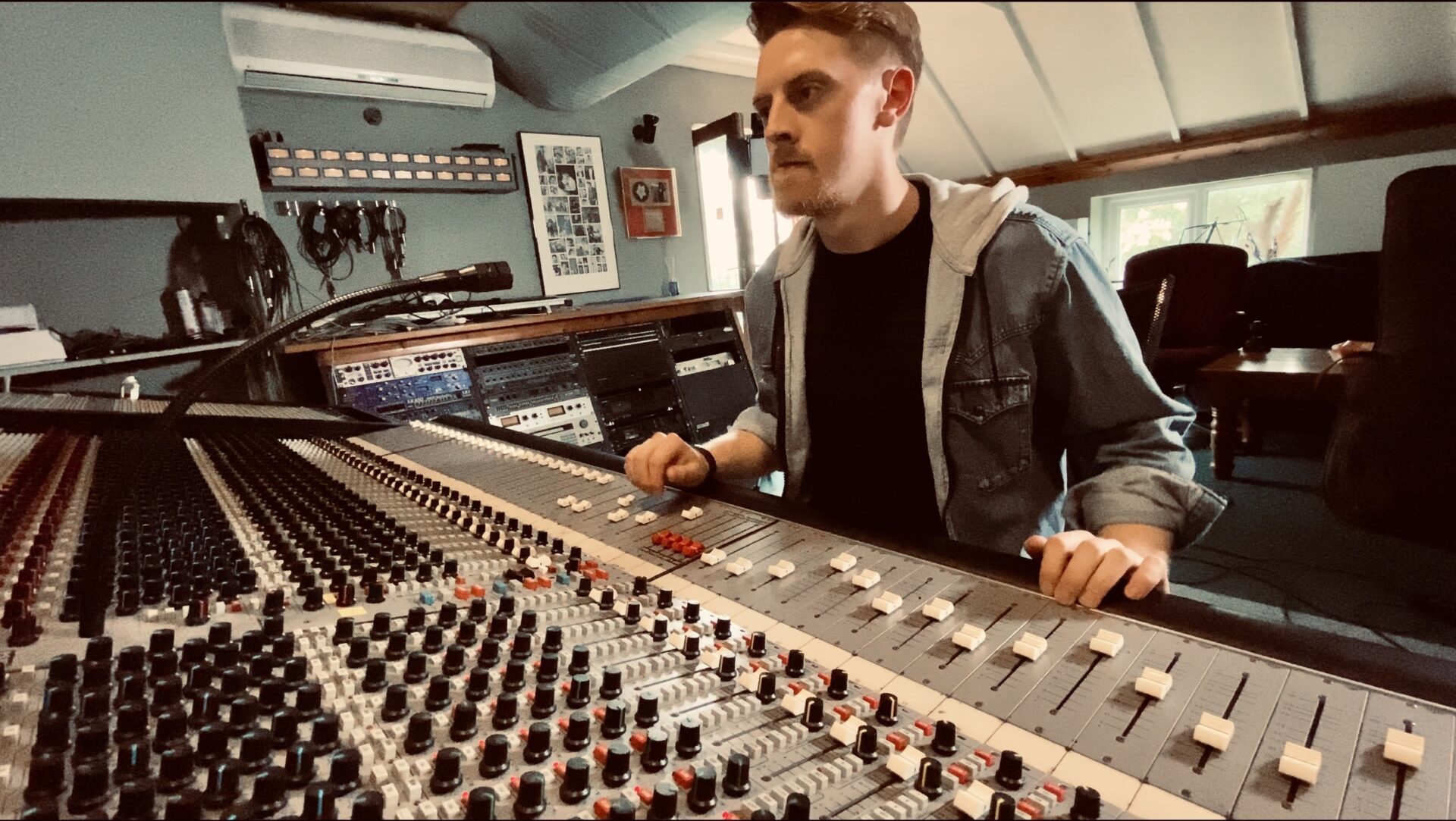“Don’t You Dare Go Past 3dB!”: Pushing the Boundaries of What’s “Allowed” in Music Production
We’ve often heard the advice not to over-process our audio: Don’t over-compress! Don’t over-EQ!
But what if I told you that the most common problem in the mixes of beginning producers and engineers isn’t over-processing, but rather under-processing?
How can I say this with such confidence? And how did it get to be this way?
While we’re at it… What can we do to shift our mindset, cast off our shackles, and start making better sounding records, sooner?
Setting and Forgetting Boundaries
I come from the first generation in audio that had most of the information we needed to get started easily and freely available online.
As my career was getting started, a huge number of large, for-hire studios were gone or dying, and with them, many opportunities to intern, improve my coffee-making skills, and marvel at the reality of major music releases being made firsthand.
Simultaneously, hyper-affordable good quality interfaces had become easily available (Focusrite Saffires, I’m looking at you), and prices on studio monitors and microphones had dropped well within reach of the beginner.
Only recently, I came across one of my first “serious” mixes and was surprised to hear it.
But I wasn’t surprised by how bad it was…
While not spectacular, it actually sounded a whole lot better than some of the mixes I’d put out later on, in my still-formative years following it.
It seemed to me that I got worse at producing and mixing before I started to get better.
I got to thinking: why?
And then it clicked: In the beginning, I didn’t have any boundaries.
It may seem counterintuitive, but because I knew no boundaries when it came to ‘how’ to use a compressor, I simply moved the skeuomorphic knobs until it sounded better.
I boosted and cut EQ until an instrument sounded like I wanted it to—and I used whatever tools I could understand or play with to make the sound better.
In the beginning, I was truly using my ears.
“The 3dB Curse”
So what happened in those years afterward? Why did I get worse before I got better?
I blame the explosion of internet instruction in the audio landscape that led to the “3dB curse”.
In the early days, I used the internet to better understand my DAW, and to get to know some extra plugins.
However, in the years following, blogs, and then YouTube and other video sharing platforms started to explode as a means of audio education.
Nowadays, I can’t scroll my Instagram, YouTube, or any other media platform without being greeted by some playlist on “how to compress X” or a reel on “how to get the ultimate Y sound”.
Across all these outlets, I’d perpetually see that same number again and again: “3dB”.
Whether it’s compression or EQ, 3dB of gain reduction, or a cut in your low mids, no matter where you look, it’s always a move of up to 3dB. And the advice is generally to avoid changes greater than this amount.
Not All Advice is Created Equal
Advising viewers not to “overcompress” or “over EQ” by more than 3dB has become something of a content creator standard, and I can’t really blame them.
If you’re not able to hear a project yourself, and you want to offer someone some generic guidance to make something better, choosing a number like 3dB works.
It’s light, but audible, and is probably going to make the viewer feel like they’ve made their music better.
Even if it’s the wrong move for the sound you’re working with, a change of 3dB is unlikely to make it sound like you’ve destroyed what you’ve started with. And so, the content creator will seem credible and maybe the viewer will come back and consume more content.
But it’s left many—myself included—with a curse that’s hard to shake! It’s almost ingrained.
Do my productions sound better when I let this habit of staying under 3dB rule the day? Probably not!
But still, I see that needle pass 3dB of compression and instinctively, I want to grab the knob and raise the threshold.
…However if I stop and listen, the “over” compressed version quite often sounds better!
That’s where the true character of a piece of gear becomes present. That’s where the vibe kicks in. That’s where you have to be SURE you’re moving in the right direction, and that’s where your project starts coalescing around a “sound”.
The reality is that on major commercial releases, it’s not uncommon to push far, far beyond 3dB of compression or EQ when appropriate.
The Pros Ignore This “Rule”
I recently mentioned to a mixer friend, that the great Bob Clearmountain discusses hitting his SSL bus compressor with up to 8dB of compression in his interview with Rick Beato. And that’s just the mix bus!
My friend scoffed at the idea. It seemed “crazy”, and went against everything he’d been taught by content creators and audio educators.
But who knows better as to what it actually takes to make a release sound finished and commercial? My friend? The YouTubers, bloggers and teachers he’d learned from? Or maybe the widely acclaimed, platinum-selling, GRAMMY-winning mixer?
Similarly, there are rundowns and examples of Vance Powell consistently hitting his API 2500 on a mix bus for a solid -4dB of gain reduction, Dan Korneff hitting double digit compression on his mix bus in his MixCon presentation, and examples of F. Reid Shippen doing “huge” EQ boosts on his SSL 4000.
My argument here isn’t that you should EQ and compress more simply because so many top level mixers aren’t afraid to do so. It’s because if you follow your ears, your ears will tell you that it’s sometimes the right thing to do.
…Particularly if you’re working in popular music styles, as about 97% of us do.
How to Break The Habit
While there are so many valuable bits and pieces of information on the internet to help us grow in our understanding of audio, there’s also a whole world of audio pedagogy that is stifling.
…And modern digital tools, with their heavy focus on visual feedback, sometimes contribute to these issues.
When you’re working all analog in terms of EQ, your hand is generally down on the desk and you’re looking at empty space between the speakers, really listening to them.
In the analog domain, you move the EQ till it sounds right and then leave it—no matter whether it’s -15dB or +7dB. If it sounds good, it is good. You probably don’t even know how far you’ve turned the knob until you’ve already made your decision!
Being brought up seeing audio meters and frequency charts on a screen makes audio so much more of a visual experience.
That’s one of the reasons I’ve come to love Sonnox Claro as a go-to intuitive EQ, which has a GUI that’s completely free of dB values. It has enough going on visually to help me quickly dial into a problem frequency I’m hearing, but leaves me simply to boost or cut as much as I think sounds right, without ever showing me how much “damage” I’m doing to the track.
It’s truly surprising to move to the Tweak window and discover just how much you’ve boosted or cut. That’s something that most content creators never dare to advise—but it’s such an effective way of working.
I have a similar experience when using a Pultec-style EQ. They generally have no specific decibel markings, no visible Q settings, and a series of counteractive EQ curves that bring the magic in ways that you’d probably never stumble across using FabFilter’s Pro Q3 because it would “look” all sorts of wrong. It’s the kind of tone-shaping box that encourages you to turn the knobs till you’ve found what you’re after.
The Caveats
Now, all this doesn’t negate that fact that there are times where keeping your compression or EQ under 3dB is pertinent.
One regular example for me is in tracking acoustic guitar. I love a little compression on the way in to glue the track and enhance the sustain and thicken the tone, while still letting enough of the transients through.
My AudioScape V3A is a go-to alongside a Neve 1073 or API-style preamp. But if I start to push that compressor up to 5-6dB of gain reduction, I promptly start to regret that I hadn’t backed it off.
All of a sudden, that once-welcome “thickness” becomes a little overpowering as I lose even more transient than I intended. Keeping it to around -3dB gives me that light thickening without having to suck a load of the low-mids and character out. To me and my clients, that little bit of compression helps get that guitar sounding a lot more like it’s part of a finished record, rather than something that needs to be “sorted in the mix”. But pushing it too far makes the sound feel lifeless and overworked.
In instances like these—especially when recording—I completely understand the guidance of 3db and below. But when it comes to mixing, especially on instruments like snares and vocals, heavier handed use of EQ and compression is often what gets us the sound we’re really looking for.
Many times, that huge modern snare sound comes from the incorporation of a parallel track that could be doing a huge amount of both gain reduction and boosting EQ. And it’s not at all unheard of to see vocal compressors on major mixes set to “stun”, with double digit gain reduction values on a single compressor not being outside the norm.
Stop and Listen!
Whenever you move a dial in the mix, it’s worth reflecting on why you’re making that move.
Does it sound better? Does it get you closer to your goal?
Or is it just one of the many moves you’ve been told about, or that you’ve read about, or seen online?
If it’s the latter, maybe it’s time to start closing your eyes, opening your ears, and pushing your gear and plugins to the max.
…If it’s too much you’ll find out, and you can reel it in.
But maybe on the way back, you’ll find a sweet spot you never knew existed if you hadn’t pushed too far to begin with.
And maybe that “pro sound” that you crave will be found in your journey to the creative extremes.
Tyler Spicer is country music producer who is originally from Great Britain.
Please note: When you buy products through links on this page, we may earn an affiliate commission.








